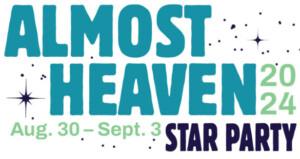AHSP Preparations Checklist
Revised August 11 2019
Here is a list of items which you should consider in getting ready for your AHSP weekend. Of course, not all of these apply to everyone.
Remember the importance of being familiar with your equipment before heading to AHSP. At a minimum, set it up and operate it in a familiar location, and practice putting it and yourself through its paces. Learn the buttons, knobs, and controls. Set adjustments to be comfortable. See how to attach wires so they don’t bind or become tripping or entanglement hazards. The better you understand your equipment, the more enjoyable your experience at the star party, where it will be darker and you may be more tired than at previous outings.
The need for a pre-check applies also to camping equipment, most of all to tents. For those pitching tents or shade canopies, bear in mind that wind on the open, ridgetop field can at times be quite strong, and prepare accordingly. Pitch your tent at home if you haven’t done so recently. Note especially any instructions on pole assembly and on fully attaching the inside of the rainfly to the tent frame. Check whether any poles are missing or broken, and that there is a guyline attached to each of the tent’s guyout loops. Check that you have enough stakes to secure all of the guylines as well as all the stake loops on the edge of the tent floor, Do not rely on the set of “fair-weather” stakes that came with your tent—these are usually too few, and too flimsy, and inadequate for strong wind gusts.
